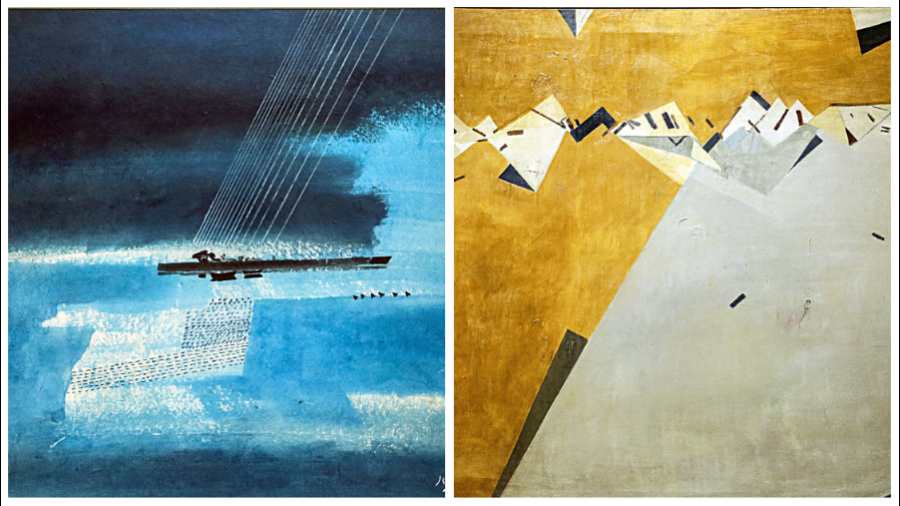Ganesh Haloi’s memory seems to measure with the precision of geometry the lush riverine topography of his childhood village, Jamalpur, in Mymensingh of Bangladesh which he, then a boy of 14, left behind with his family when they moved to Calcutta in 1950. When he recreates that land on canvas or rice paper years later, the details get blurred and all that we see is the rhythm and measured dance of colours and space, filtered through the eyes of an artist who, in his years of service with the Archaeological Survey of India, made copies of the fading beauty of the Ajanta paintings.
Haloi does with paint what Bengali poets and writers did with words. Only the medium is different. The exercise of reimagining his past homeland and its landscape is the same. Characteristically, Abanindranath Tagore had painted with words his family retreat in his memoir, Jorasankor Dhare: “The picture looms clearly before my eyes; I can still paint it exactly... On the days clouds gathered over the Ganga, before our eyes half of the Ganga would turn black, and the other half of Ganga a luminous white; it was glorious! The fishing boats would reach the ghat the moment there was a hint that a storm was about to break. Ganga suddenly became deserted. As if a black and white cloth had been laid out.” On a more lyrical note, Jibanananda Das wrote in his short poem, “Ghas”: “A soft green light like the shooting leaves of a lime tree/ pervades the world at dawn...” And Rabindranath Tagore wrote in Chhinnapatra at Silaidaha on October 1, 1891: “I woke up late and brilliant sunshine greeted my eyes, and the autumnal river was full, brimming over with water. The river and the bank were at the same level, the paddy fields were a beautiful green and the trees in the village after a shower were dense and full of vitality. It was so beautiful I am at a loss for words… When I sit quietly in the evening on the boat, the water is still, the river bank becomes hazy, and the glory of sunset at the end of the sky fades, then I feel throughout my entire mind and being the vast, benevolent, wordless touch of nature, silent and with downcast eyes.”
This ‘wordless touch of nature’ is what Haloi has always tried to express through his works. He did the same in A Space Left Behind (December 14, 2022-January 14, 2023) at Akar Prakar. The severity of Haloi’s forms is relieved by his warm colours and diverse textures. Marks and squiggles that stand for the natural and artificial elements appearing on a certain landscape sprout on the painted surface.
Through variations of some basic forms, colours and textures, he can convey a deeply meditative calm, improvising all the way and exploring the emotional potential of each of the elements he deploys when constructing a work. Like an Indian classical musician, while Haloi keeps repeating a limited number of elements in his work, he simultaneously innovates and develops his ideas, and even before we are aware of it, his artistry is in full bloom as he applies one masterly stroke after another. That is the surprise element in Ganesh Haloi’s work where the basics remain the same.











